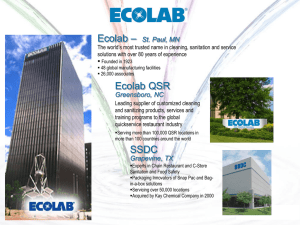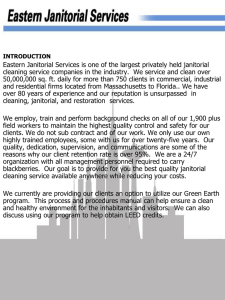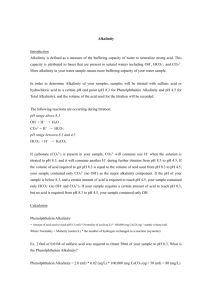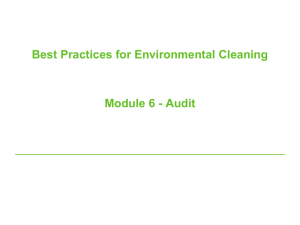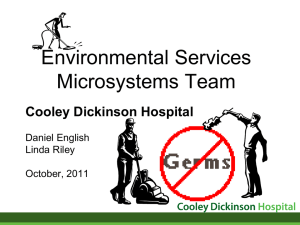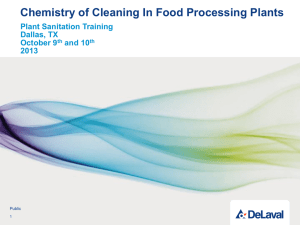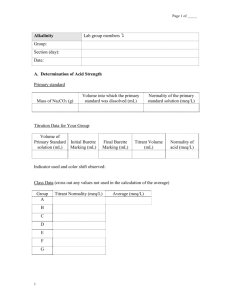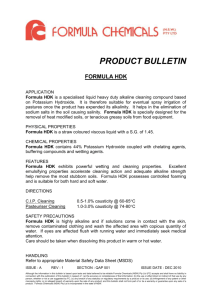pH –What Do Those numbers Mean?
advertisement
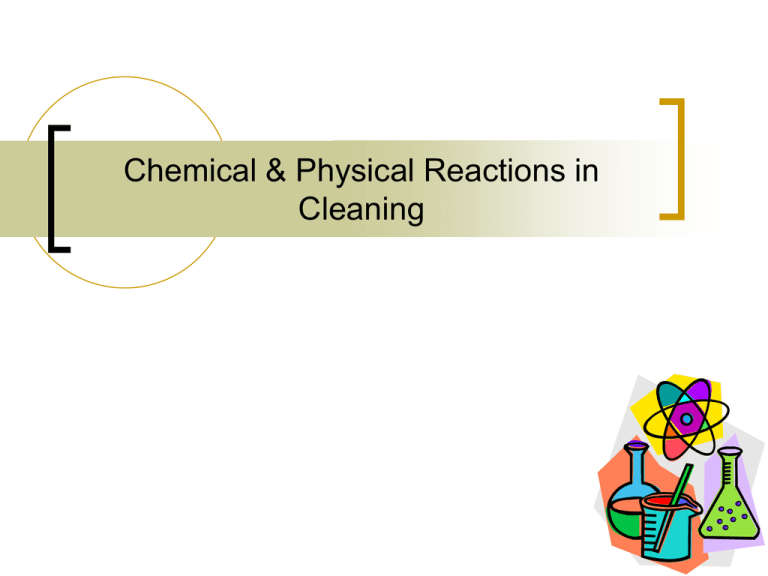
Chemical & Physical Reactions in Cleaning Review Cleaners are concerned about pH pH describes the number of H+ ions in a solution A difference of 1 whole number in pH represent a 10-fold increase. Cleaners expect certain types of products to fall into a specific range of pH. Further Review Some information cleaners have received about pH is inaccurate or misleading. There is more to chemical strength or reactivity than pH. Most cleaning is accomplished by physical reaction not chemical reaction. What is a Chemical Reaction? Molecules of one kind are changed to molecules of something different. An acid rust remover does not remove rust, but changes it to something different that is colorless. Oxidation and reduction are chemical reactions. Do you remember these terms from an earlier class? Physical Changes Most carpet cleaning involves physical changes. An example of a physical change is dissolving salt in water. The salt and water are combined but they did not change into anything different. When the water evaporates, the salt is still salt. Physical Changes Water soluble soils are removed by dissolving them in water and extracting the water. Oily soils are removed by dissolving them in solvents. Mixtures A mixture is another type of physical change. An example would be combining salt and sugar. They mix, but the salt is still salt and the sugar is still sugar. No chemical reaction takes place. Neither is dissolved by the other. Nothing new is formed. Mixtures Water and oil do not normally mix, they separate when combined. With the addition of an emulsifier, the oil can form small droplets that disperse and mix in water. Salad dressing is an example of water and oils mixing. Physical Reactions Most carpet cleaning is done by the physical reactions of dissolving or emulsifying and then extracting. pH plays only a small role in a physical reaction. The Role of pH Most soils are acidic, between 4 and 5. Things can be dissolved faster when neutralized so, alkaline cleaning agents help speed this process. pH and Chemical Reactions Highly alkaline agents can combine with oily molecules to form soap. This is called saponification. An example is lye soap. Highly alkaline lye was combined with animal fat to make soap. A highly alkaline product such as Prolon can combine with oils or grease in the carpet to form a basic soap that rinses out of the carpet easier than the oil and grease. Chemical reactions can change the soils we are trying to remove. Chemical reactions can also produce changes in the fibers or dyes we are cleaning. Using physical reactions to clean is safer than using a chemical reaction. Other Factors That Contribute to Chemical Reactions In addition to pH, other factors that influence chemical reactions include: •Reactivity •Total Alkalinity •Buffering Lets see what each of these terms means and what effect they can have on cleaning. Reactivity Nitrogen and oxygen are two gases in our atmosphere. Nitrogen seldom reacts with anything. Oxygen is quick to react. It combines with iron to form rust. Oxygen oxidizes oils to form a difficult to remove stain. Anything burning is combining with oxygen. Reactivity – What’s the point? Some things react more readily than others. This must be considered along with pH to know how severe a reaction will occur. An example: The pH of a common cola beverage is similar to the pH of an acid tile and grout cleaner. The chemical reactions if you ingest them are very different. Buffering The pH of some solutions changes quickly when mixed with another solution or from being “used up” reacting with soils. The pH of other solutions remains very stable even when water is added or soils are present. The ability to keep a stable pH is due to buffering. Buffering is the addition of additional “reserve” alkalinity. Total Alkalinity A solution that with plenty of “reserve” alkalinity and an unbuffered solution may both have the same pH. Which one do you think has higher “Total Alkalinity?” Total Alkalinity A solution with low total alkalinity can “run out” of ions and slow down or stop a reaction. A solution with high total alkalinity can sustain a chemical reaction. Is buffering a “Good” thing? It depends. When cleaning wool, a buffered cleaning agent with high total alkalinity can damage the wool and/or the dyes because even a slight residue left behind will not be neutralized but will remain highly alkaline. For cleaning oil and grease, a buffered solution helps maintain pH for greater saponification. The Big Picture A cleaning agents role in producing a chemical reaction depends upon several factors – pH How reactive the chemical is Total alkalinity Summary Thorough cleaning is accomplished mostly by products that produce physical reactions such as dissolving, emulsifying and lubricating. Slight chemical reactions may happen with many cleaning chemicals. Most chemical reactions are caused by specialty agents such as bleaches (reducers & oxidizers), rust removers and similar.


